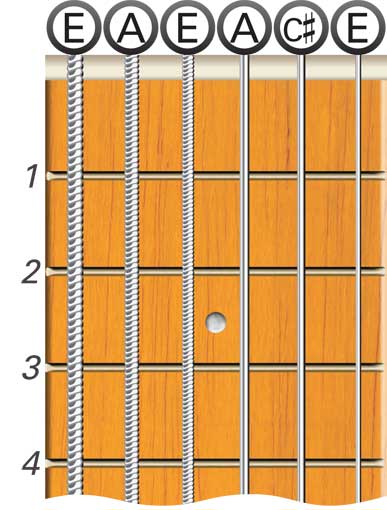
Open Tunings
Up until this point we have discussed the practical use of standard tuning, and how it can be used as part of a modem guitar player’s repertoire. We will now look at the traditional approach of open tunings. Open tuning is when the 6 open strings of the guitar are tuned to be the notes of a chord.
Although standard tuning is useful when using the slide for the occasional song or part of a song, open tuning will bring the slide player to a more interesting level.
Open tuning slide guitar is an easier way of playing the scales needed, as well as using fuller sounding chords, because up to six strings can be played to produce a Major chord. Less right hand damping will be needed, and any overtones being produced will help add fullness to the sound, rather than be "off key", which is a disadvantage with standard tuning.
There are mainly four different keys used for open tuning. They are E, D, G and A. The open tuning of E and D can be considered the same and the open tuning of G and A can be considered the same.
The two related keys share the same position of scales and chords, because the open E tuning is exactly one tone higher than the open D tuning, and the open A tuning is exactly one tone higher than the open G tuning.
The Four Common Open Tunings
Open E

Open D

Open G

Open A
